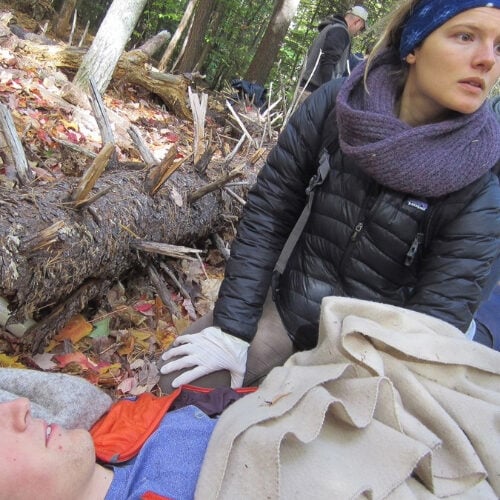
What Do I Do During a MARCH Assessment?
Question: When responding to a wilderness medical emergency, what should be done if one side of the chest does not rise during a MARCH assessment?
Survival Med’s Answer: During a MARCH assessment, if one side of the chest doesn’t rise, it suggests a potential pneumothorax (collapsed lung). Immediate evacuation is crucial, and preparation for CPR is necessary, given the rapid drop in blood pressure. The MARCH assessment involves checking for Massive bleeding, ensuring Airway is clear, assessing Respirations, evaluating Circulation, and deciding on the appropriate evacuation method (H for Hike or H for Helicopter).
If someone with paramedic or higher-level skills and appropriate equipment is present, needle decompression becomes a field option until EMS arrives. Needle decompression involves inserting a needle into the chest to release trapped air. When EMS is on-site and equipped with a high-flow oxygen nasal cannula, placing the person on it is advised. This response strategy addresses the critical issue promptly, emphasizing the importance of skilled intervention and access to emergency medical services in such scenarios.















